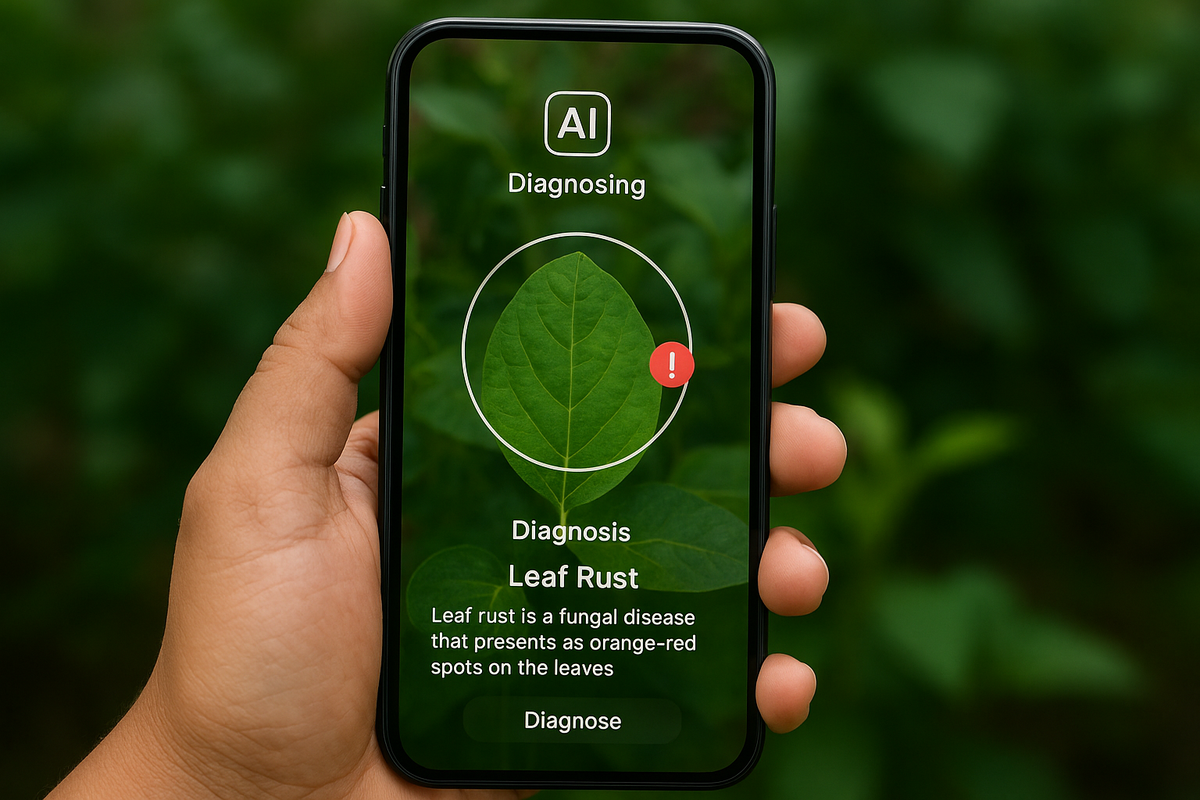Generative AI & LLMs Reach the Farm: Crop-Disease Diagnosis for Farmers
India’s smallest farmers are now pointing their phone cameras at a leaf and getting disease diagnosis powered by AI. Will generative AI become the new frontline agronomist in rural India?

Fresh from the field
Generative AI and large-language models (LLMs) are now taking a plunge into rural agricultural sector to determine crop health, helping small and marginal farmers detect diseases early and save their crops. Not just that advice in local languages has further increased Gen AI's accessibility.
How is it Panning Out
- Researchers at IIIT Allahabad developed a deep-learning system that combines leaf photos with sensor data that detect soil moisture, temperature, humidity. The model brought 97.25% accuracy in detecting diseases for crops like maize and potatoes, saving farmers from immense losses.
- At the same time, generative AI is also being used to improve datasets and increase diagnosis tools. A recent study used a hybrid of real and synthetic images generated via Gen-AI to improve classification of watermelon diseases indicating how AI can be helpful where real-world data is scarce.
- Agritech apps like Plantix allow farmers to capture the image of a diseased leaf and receive advice on diagnosis and treatment. These platforms show how AI is increasingly becoming accessible to small-scale farmers.
A Revolution in Agri-tech
Access to plant pathology, adequate agricultural education and saving crops from getting destroyed by plant diseases have been some of the major issues for famers in India. With the help of Generative AI and LLM-powered tools bridging the gap has been easier.
- Early detection: Diseases often spread too fast to be treated in advanced stages; AI can detect symptoms at early stages and caution farmers.
- Localized advice: Many AI tools offer support in vernacular languages and tailor recommendations to regional crops & farming conditions.
- Scalability: Generative models can create synthetic data to train AI systems when real field data is limited or costly to collect.
Key challenges & caveats
- Data quality and representativeness: Many AI models are trained on curated data but may falter in real-field conditions.
- Model and infrastructure access: Rural network, smartphone access, language support and digital literacy still limit farmers from adopting these tools.
- Trust and transparency: Farmers need diagnostics they can trust. Any errors in misdiagnosis or inappropriate recommendations could harm yield or increase input costs.
- Sustainability and business models: Some platforms have raised concerns about promoting pesticide sales under the excuse of treatment.
- Integrating treatment and extension services: Diagnosis is only the first step; effective follow-through y farmers is often left out due to lack of knowledge.
How are State Governments Supporting It?
State governments are digitising agriculture operations. For instance, in Andhra Pradesh Kharif 2025, the APAIMS 2.0 platform is rolling out pest and disease alerts via AI for plots throughtout the state.
Research institutes and agritech startups are also collaborating to develop low-cost AI tools that are available in vernaculars and can be used by smaller farmers, not just large commercial operations.
What's for Future?
- We will likely see multimodal AI tools becoming more common in agriculture: image + language + sensor data + user feedback cycles.
- Generative AI (LLMs and vision models) will help build richer diagnostics and also automated extension advice in local languages.
- Success will depend less on novelty and more on deployment at scale: reaching remote farmers, supporting them with training and making sure the tools integrate into farmers’ workflows.
- Ethical, inclusive, and transparent design matters: Will farmers have control over their data? Will they understand AI-based suggestions? Will it reduce input costs rather than increase them?
Wrapping Up
Generative AI and LLMs are no longer just lab projects in agriculture. Instead, they’re entering the fields of small-farmers in India. By offering early diagnosis, customized advice and on-the-ground accessibility, these tools hold real potential to improve crop health, boost yields and empower farmers who have traditionally lacked access to expert support.
The challenge now is making sure that the promise moves from pilot to scale, while keeping it affordable, understandable and trustworthy for those who matter most: the farmers.


